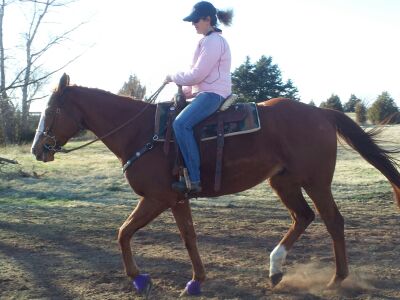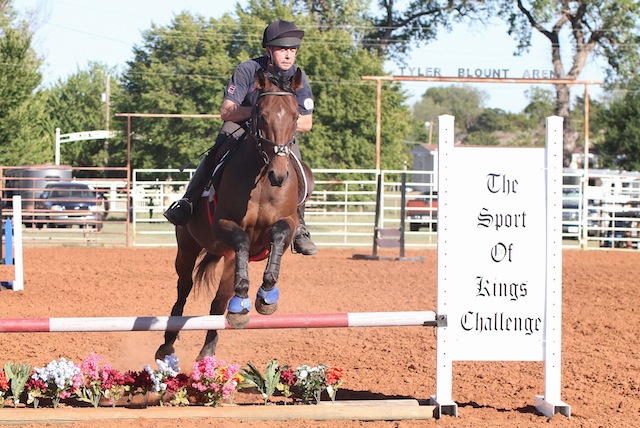Not every rider is pointing his or her ex-racehorse Thoroughbred toward the grassy, fast fields of a cross-country course. Some prefer the tight turns, and super fast starts and stops of a barrel race, another venue in which the Thoroughbred can shine, according to longtime horseman and OTTB trainer Lynn Sullivan of Oklahoma
In this week’s Clubhouse Q&A, Sullivan, of Thoroughbred-Athletes.com says she has trained many Thoroughbreds who are actually better suited for the barrels than they are jumping, and she offers tips on how to re-train for this exciting sport.
Q: Lynn, a reader asked me to look into the ups and downs of teaching an OTTB to neck rein. To start, what are some of the factors influencing the ease or difficulty of re-training a racehorse to do this?
We find it fairly easy to teach an OTTB almost anything; but the factors that would influence difficulty would be that these horses are usually really heavy on the forehand, and have no lateral training.
I would have to say the factors that most influence ease would be their willingness to be forward and natural athletic ability.
Q: In your experience retraining Thoroughbreds, how did you get them to respond to different aids?
We start with balance and lateral control.
Once lateral understanding (using leg and indirect rein) is accomplished, most everything else is easy.
Lateral movement begins with groundwork, as most racehorses do not know how to move from the rider’s leg pressure.
It’s always a good idea to be safe and know how the horse will respond to pressure by working from the ground, first.
Q: Perhaps now would be a good time to get an explanation on neck reining, and why it is sometimes preferable to the usual method of turning a horse.
Neck reining began when horses were first used as service animals, and people needed to be able to control the horse with one hand and carry weapons or other articles like ropes, etc., with the other.
On the track, pony horses must be controlled with one hand so the pony-person can control the racehorse with the other.
For barrel racing, sometimes you have to hang on to the saddle horn to stay on, so your fast-moving horse has to be controlled with one hand!
Q: And, Lynn, please tell me a little bit about your background re-training off-track Thoroughbreds in the great state of Oklahoma.
I am a licensed thoroughbred racetrack trainer, obtaining my license in 1978 at Calder Racecourse, my home track.
I have always had a heart for what happens to my horses when they finish their careers, so I take the time to teach them a new job to make it easier to find them homes.
As a trainer, I have raced in many states, and depending where we were, some equine disciplines are more popular than others.
Some horses are most suitable for jumping, so I had to learn a little of that; some are more suited for dressage, so I had to learn a little of that. But mostly I had to use them as pony horses and teach them to neck rein.
In 1989, I had a nice horse named Bold Billy L who I used as a pony after it was obvious he did not want to race.
I was able to win some jackpot barrels with him and finally sold him to a young lady who barrel raced with him in pro rodeos.
There are many others who I barrel raced in my younger days, and made some money with, and even though I now reside in Oklahoma, I find that most people use Thoroughbreds as hunter/jumpers or dressage.
Although I have not actively barrel raced in many years, we now have a few OTTBs that will be more suited for barrels than jumping, so we will be working on them in that capacity. I look forward to seeing these individuals compete in the arena this summer!




